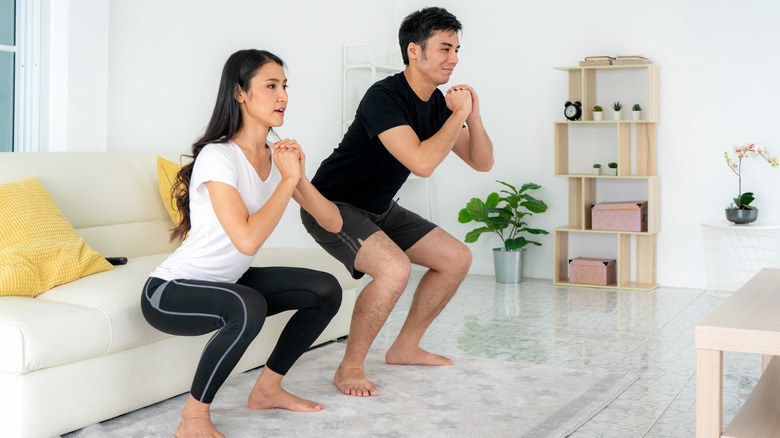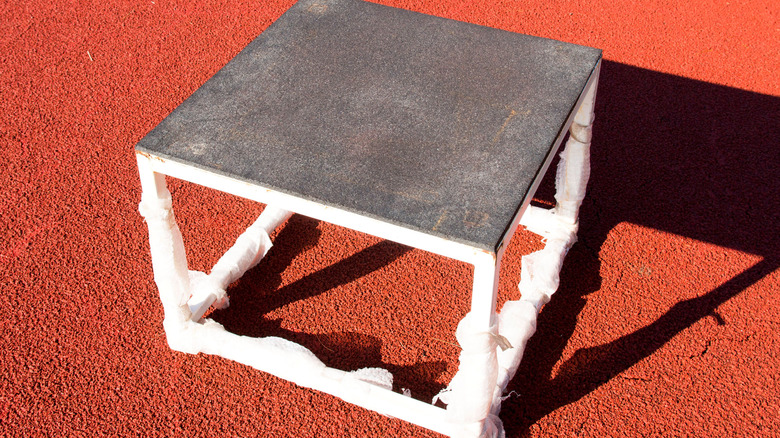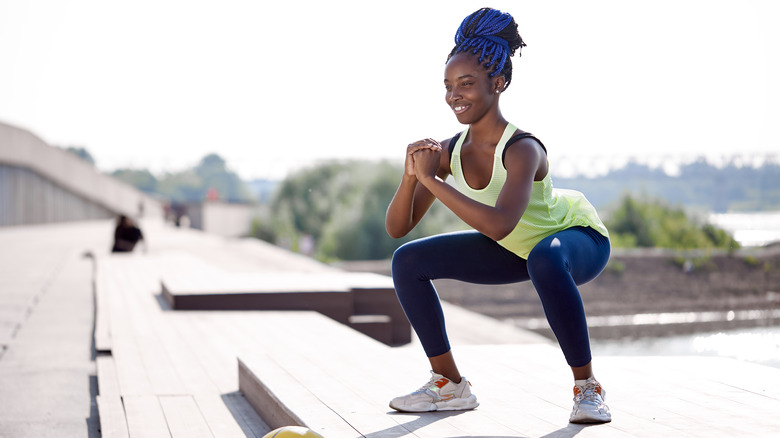How To Perfect Your Form While Doing A Box Squat
Weightlifters often dread leg day. Training our lower body requires serious effort because the legs are such large muscles. It takes much longer to see gains in your lower body compared to working your arms or shoulders. However, working the muscles of the hips, legs, and butt can give you more stamina for sports or everyday activities. You'll also notice a boost in your metabolism while improving bone health, according to Physiomed.
If the big guys at the gym are hogging all of the squat racks and Smith machines, that's no excuse to skip a good squat workout. Box squats are a good way to build strength in your legs, hips, and glutes while also improving your range of motion (via Women's Health). You'll probably squat a little deeper than usual for the box squat, but the box behind you will prevent you from falling over. The box squat will also help you to achieve a more consistent squat depth. According to Shape, our quads often do much of our leg work. Because the box squat shifts our center of gravity towards our posterior chain as we reach our hips back toward the box, we're letting our hamstrings, butt, and calves do their share of the work.
Setting up the perfect box squat
If you're at a gym, find a bench or a plyometric box where your thighs can be parallel to the floor when you squat down. If you're at home, find a sturdy chair. Take a half step away and space your feet about hip width or wider. Angle your feet at 11 and 1 on the clock (via Women's Health). Master Class suggests that you tuck your chin slightly, but keep your head and neck in a neutral position, even as you lift and lower. Be sure your feet are anchored by gripping the floor with your toes. Externally rotate your shoulders so that your shoulder blades are moving towards each other. As you lower down towards the box, imagine someone is pulling your belly and hips behind you as you bend your knees. Just as you reach the box, lightly pause for a second rather than bouncing right back up. Drive through your heels as you bring your hips and belly up and forward back to standing.
According to Muscle & Fitness, you shouldn't relax back onto the box, but remain in control and be ready to move upward again. You should also be mindful of how your knees are tracking during the movement. Your knees should be behind your toes and in line with your shoelaces.
Incorporating box squats into your workouts
Box squats are useful for people who are beginning their weight-training journey because they introduce good form (via Shape). As you advance in this movement, Women's Health notes that you can work towards a single-leg box squat: try kicking one leg forward while using your forearms to help you balance, then lower down on the standing leg. You can also add weight to your box squat by holding a dumbbell or a kettlebell at chest height.
According to Muscle & Fitness, it's easy to cheat with a typical squat because you might not squat down far enough. Box squats keep you honest because you're consistently squatting the same depth. If you choose to add weight to your box squats, you might find you can't squat as heavy (via T Nation). Choosing a lighter weight for this functional movement will allow you to incorporate it into your workouts a little more often, according to Women's Health. Perhaps then, you might begin to look forward to leg day.



